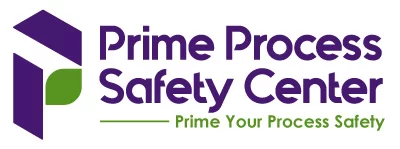
Process safety is of utmost importance in the coal and mining industry due to the inherent risks associated with mineral extraction. This sector must address challenges like flammable gases, combustible dust, and mine structural integrity. Effective risk management involves identifying and mitigating risks specific to each mining operation, including methane explosions, coal dust combustibility, and structural collapses. Comprehensive safety systems, including ventilation, dust suppression, and structural supports, are essential for incident prevention, requiring regular maintenance. Compliance with industry regulations, such as those set by the Mine Safety and Health Administration (MSHA) in the United States, is fundamental. Training and fostering a safety culture are vital, empowering workers to report hazards and contribute to safety initiatives, enhancing both worker well-being and industry sustainability.
The coal and mining industry is inherently associated with significant fire and explosion hazards due to the nature of the operations and the materials involved. Key hazards include:
- Dust Explosions: Coal dust, when suspended in air and exposed to an ignition source, can lead to catastrophic dust explosions. The finer the dust particles and the higher their concentration in the air, the more explosive they can be.
- Methane Gas Explosions: Coal mines, especially underground ones, often contain methane gas, which is highly explosive. Methane can accumulate in pockets and, when mixed with air, can create explosive mixtures that are ignited by a spark or flame.
- Spontaneous Combustion: Coal, due to its organic nature, can spontaneously combust when exposed to oxygen over a prolonged period, especially when stored in large quantities or piles. This poses a significant fire hazard.
- Electrical Equipment: The use of electrical equipment in mines can be a source of ignition, especially in the presence of explosive gases or dust. Faulty equipment, short circuits, or static electricity can trigger fires or explosions.
- Frictional Heat and Sparks: Mining operations involve heavy machinery that can generate frictional heat and sparks, potentially igniting flammable gases or dust.
- Chemical Hazards: Certain chemicals used in mining processes can be flammable or reactive. Improper handling or storage of these chemicals can increase the risk of fire or explosion.
- Improper Ventilation: Inadequate ventilation in mines can lead to the buildup of flammable gases and dust, increasing the risk of fire and explosion.
- Welding and Cutting Operations: Hot work activities like welding and cutting can provide ignition sources if not properly managed, especially in areas where flammable materials are present.
- Conveyer Belts: Conveyor belts in coal mines can create friction and accumulate static electricity, both of which can serve as ignition sources.
- Smoking and Open Flames: Smoking and the use of open flames in mining areas, where flammable materials are often present, can be a significant source of ignition.
Why Work with Prime Process Safety Center
- Industry-Specific Expertise: Our team possesses specialized knowledge in addressing the unique process safety challenges of the coal and mining industry, ensuring solutions that are both relevant and effective.
- Customized Risk Management: We develop risk management strategies tailored specifically to the operational nuances and safety requirements of the coal and mining sector.
- Regulatory Compliance and Guidance: Our deep understanding of the regulatory landscape in mining ensures that your operations stay compliant with current safety standards and legal requirements.
- Advanced Analytical and Technological Tools: We employ cutting-edge analytical methods and technologies for precise hazard analysis and risk management, enhancing safety and operational efficiency.
- Promotion of a Safety-First Culture: We prioritize building a proactive safety culture within your organization, essential for ongoing management and improvement of process safety in mining.
- Comprehensive Employee Training: Our training programs are designed to equip your workforce with the necessary skills and knowledge for maintaining a safe mining environment.
- Continuous Support and Adaptation: We offer ongoing support and adapt our strategies to meet the evolving challenges and technological changes in the coal and mining industry.
- Experience with Complex Mining Operations: Our experience with the complex and varied operations in mining provides us with a broad perspective and innovative solutions to process safety challenges.
- Operational Integrity and Efficiency: Our collaboration aims to enhance not just the safety but also the overall operational excellence of your mining processes, contributing to long-term industry success.
- Collaborative Problem-Solving Approach: We work closely with your teams to understand your specific challenges and integrate our solutions seamlessly into your operations, ensuring effective and cohesive management of process safety issues.

